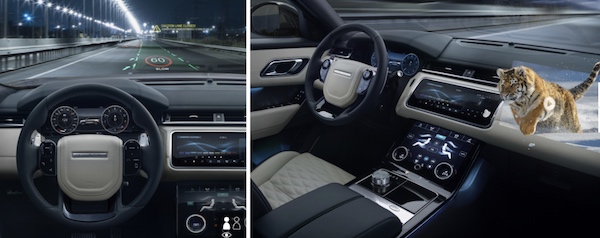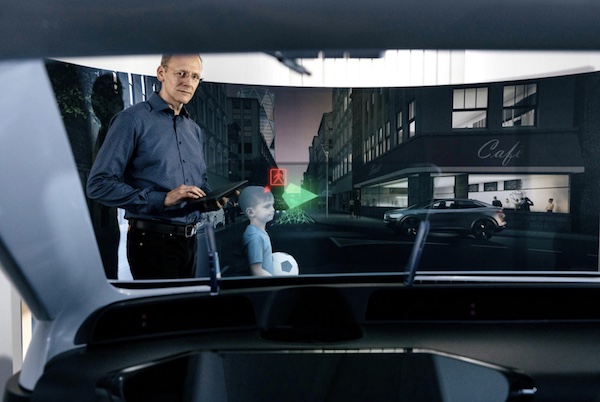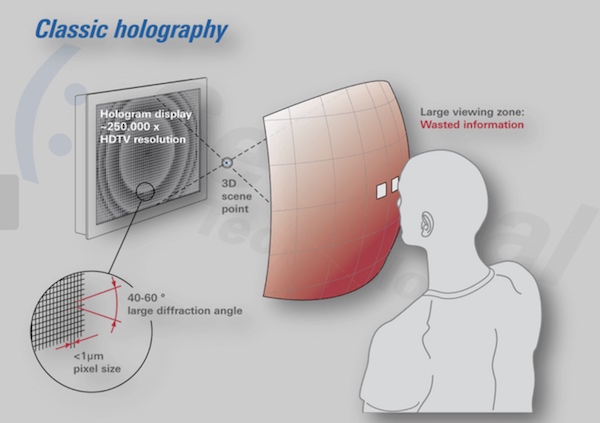In past decades, cars and display technology have had a strange relationship. While a lot of car information systems rely on a visual representation of certain data, these readouts were basically all mechanical dials. The automotive industry was especially careful in selecting new display technologies.

For example, for the longest time they used vacuum fluorescent displays (VFD) instead of LCDs. This had a lot to do with the temperature sensitivity of the LCD technology. For critical information like speedometer readouts, for a long time LCDs were considered not suitable, reflecting temperature limitations in the lower as well as upper range. Only after developing suitable LCDs did the automotive industry start to change its acceptance. It all started with clock displays and began to take over other information display tasks in the instrument cluster. In recent years more progressive automobile brands started using LCD and other technologies like OLED in the instrument cluster. The latest and most regarded application was the Audi dashboard completely realized in OLED technology. Compared to the decades before this technology adoption went rather quickly.
Another aspect that made the automotive industry an important player in the display industry was the the rise of the entertainment displays. First displays attached to the front seats for the entertainment of the rear passengers were aftermarket solutions that quickly became standard features in high-end cars. With the integration of the smartphone interface into the car entertainment system, screens were also installed in the front dashboard. All in all, we saw a dramatic increase in display area used in every car. While this trend started in high-end cars, it has quickly shifted to mid and lower range vehicles as well. The latest development in this regard was the Tesla Model 3. This car has no traditional dials or buttons at all, everything is presented and controlled from a large, centrally located touchscreen display.
Some market researchers see in the automotive industry the strongest driver for the development of the display industry. We have written about this trend before.
In the last few weeks we have heard from Jaguar/Land Rover as well as from VW about their plans to look add even more developmental display technologies in the future. Let us take a look at what these companies are planning to do.
Jaguar / Land Rover
In a press release, Land Rover and Jaguar announced a project with the University of Cambridge. They are working with the Centre for Advanced Photonics and Electronics (CAPE) Consortium on a range of projects that are mainly addressing the driver interface. In total there are ten (10) named projects without any further description of what these projects are. (Interestingly, CAPE also lists nine projects with Disney Research and Dow Corning respectively as well) Nevertheless, the names are somewhat indicative and there are some working on HUDs as well as HMI (human machine interface). Depending on the project the responsible research lead at the university of Cambridge changes giving some more clues what they are working on.
 Jaguar/Land Rover and University of Cambridge development program; credit: Jaguar / Land Rover
Jaguar/Land Rover and University of Cambridge development program; credit: Jaguar / Land Rover
Their published press release mentions the development of a new 3D technology as part of the next generation head-up display. It is funny how photoshopped images in support of the marketing efforts keep making the same old mistake of breaking the edge limitation even after many years of stereoscopic display technology entering the marketplace. I guess the trend to 3D is so long ago that we forgot all about it!
The 3D displays used in the automotive system under development are meant to work without any glasses, which means they are some form of autostereoscopic or light field display. They make the case that a German study is showing a decrease in reaction time in the case of warnings displayed by such a 3D display system. This study is actually the dissertation of Nora Broy at the University of Stuttgart issued in 2016. The research was pretty much done during the height of the stereoscopic 3D rage. It seems funny that these results are now triggering the further development of 3D display technology.
VW
VW went one step further by investing into SeeReal Technologies, a Germany based company working on holographic displays for many years.I visited SeeReal Technologies many years ago and since then they have continued their development of advanced display technologies. According to the press release, VW took a minority stake in SeeReal Technologies to secure access to future-oriented display technology. They specifically mentioned research about head-up and interior displays with 3D holographic elements.
 VW – SeeReal Technologies cooperation; credit: VW
VW – SeeReal Technologies cooperation; credit: VW
They specifically announced that the new display technology will be used in the full electric VW ID, which will be sold starting in 2020. While the press release does not say if the first VW IDs already incorporate a holographic display, they certainly aim at making this display technology part of the ID family in the future.
Similar to the Jaguar / Land Rover approach they want to use this 3D display for driver interaction as well as passenger entertainment. They want to project “touchable” displays into the air as an alternative to other controls. It seems like they aim at the next step up from the Tesla 3 approach.
If you are not familiar with SeeReal Technologies, they are a research and design house aiming at licensing their technology, they are not aiming at manufacturing any displays, though they d0 make their own prototypes. Since their strength is in the IP field, a good measure is their extensive patent portfolio of 568 local patents as of Q1’19. For a short introduction to SeReal technologies just take a look at the short video from 2018, where the CEO Bo Kroll and CTO Hagen Stolle explain their ideas.
 Classic holography requires large amount of data and high resolution displays; credit SeeReal Technologies
Classic holography requires large amount of data and high resolution displays; credit SeeReal Technologies
A large portion of their technology is dealing with eye tracking technology. This is driven by the need to limit the calculations needed for moving holographic images in high resolution. At the same time limiting the field of view where a holographic image is visible, allows the use of lower resolution displays in the first place. For a more thorough discussion of their technology please visit their website.
SeeReal Technologies holography solution limits data and resolution requirements, credit: SeeReal Technologies
All in all, these holographic technologies have been under development for quite some time. It is remarkable that the automotive industry sees a use case for such a technology, while it is still not in discussion for typical applications like desktop computers or entertainment for example. As I said in the title, the automotive industry is becoming more of a driver for new display technologies. – NH

